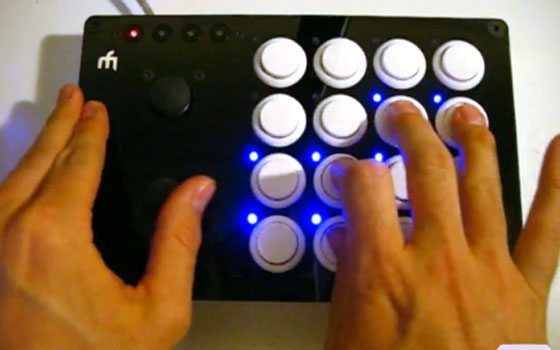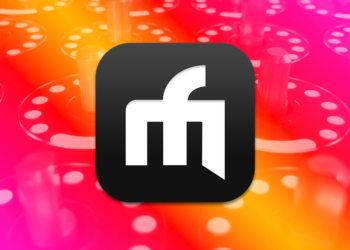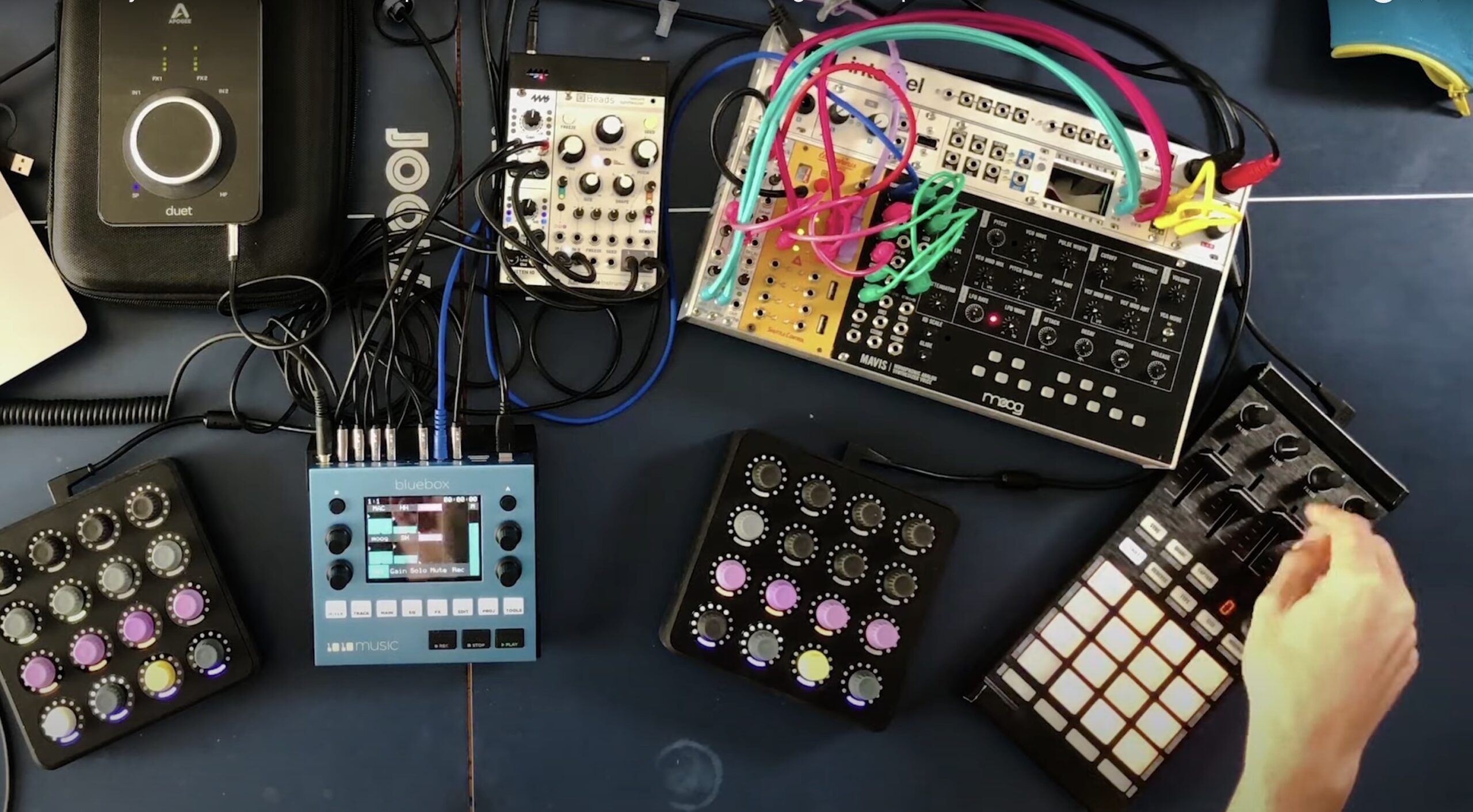When I first started experimenting with cue point juggling last year it was a blast but playing the same sample a million times can get a little stale. This led me to explore various ways of working with cue points and FX to create a richer palette of sounds. The results of that exploration became a new concept that could be called cue point chords. The fundamental idea is very simple but can be applied to a wide range of samples for amazing results. Check out the video above for a demo and read on for the technical stuff.
Cue Point Chords:
The key to cue point chords is a setting up a group of buttons so they have a spacial relationship to each other. Ideally, you should have a controller with at least 3 rows of buttons, and 4 columns. The controller should also have a close button spacing so you can press up to 4 buttons at the same time. Obviously, a nice grid of arcade buttons is basically perfect but you could implement the basic concept with other controllers.
- The first row (root note) triggers cue points
- The 2nd row divides the root note into musical values depending on which note is played, using the beatmasher or other time effects
- The third row adds a musical color to the sound using different FX per button
Playing various combos of these rows with the same 4 root notes results in a wide variety of chord shapes and sounds that are easy to remember and fun to play. More on this subject including a tutorial and mappings soon!
more info on the midifighter










